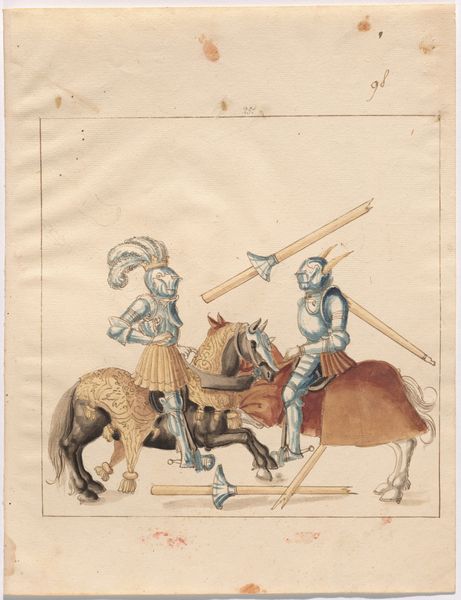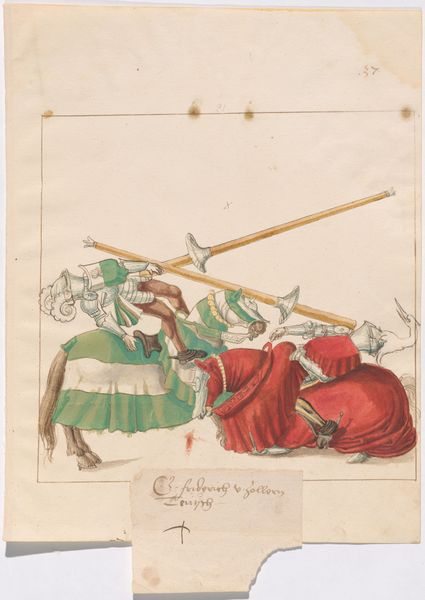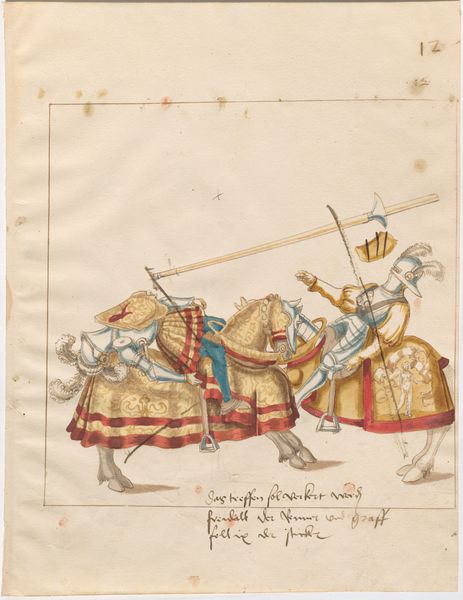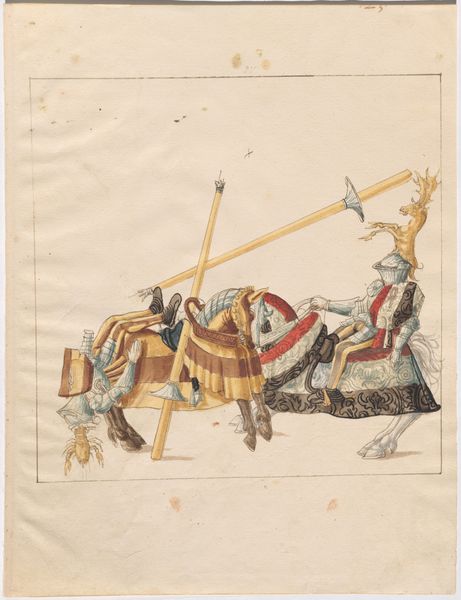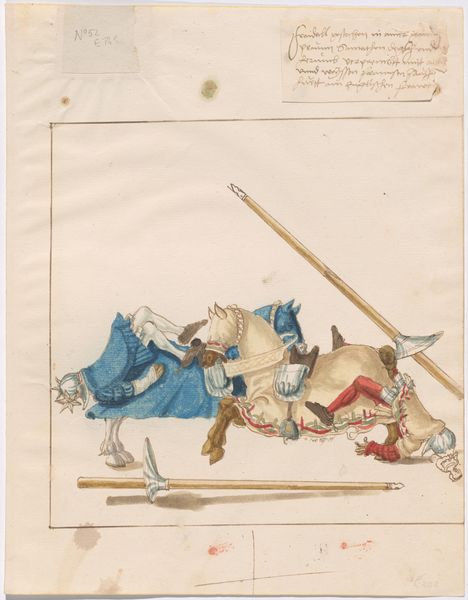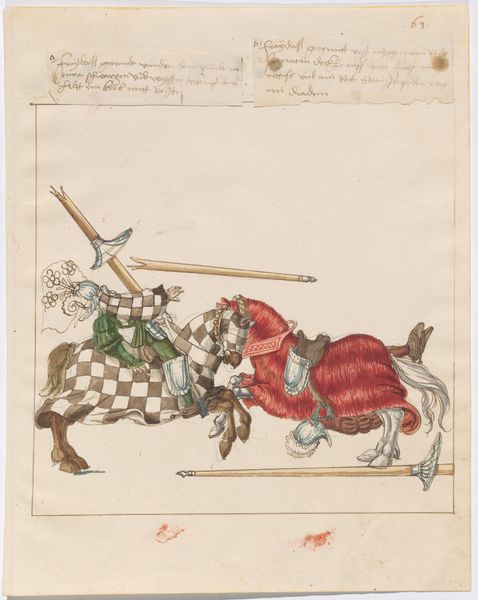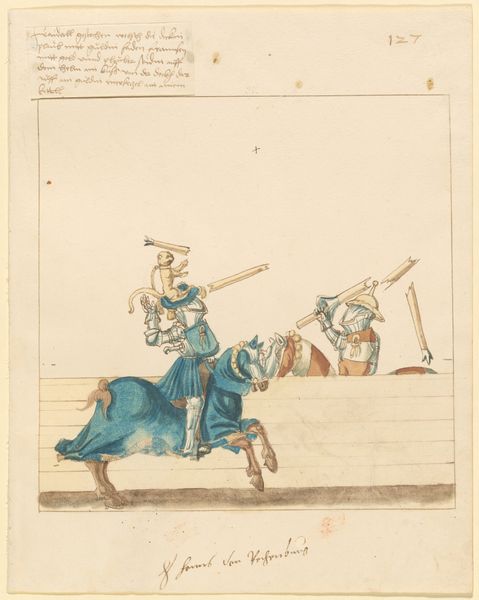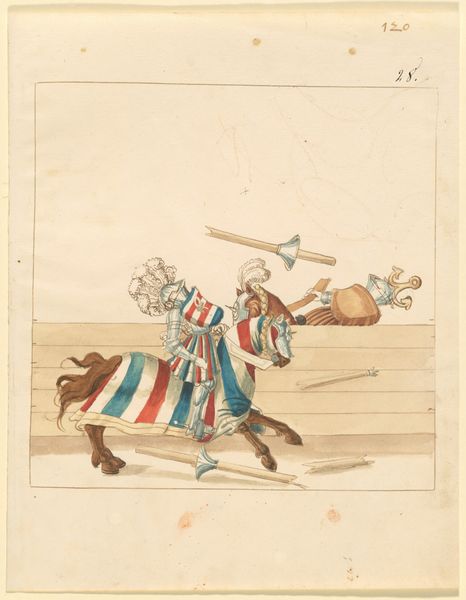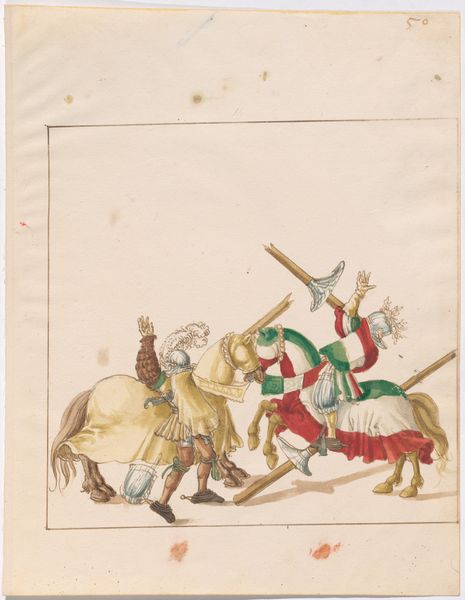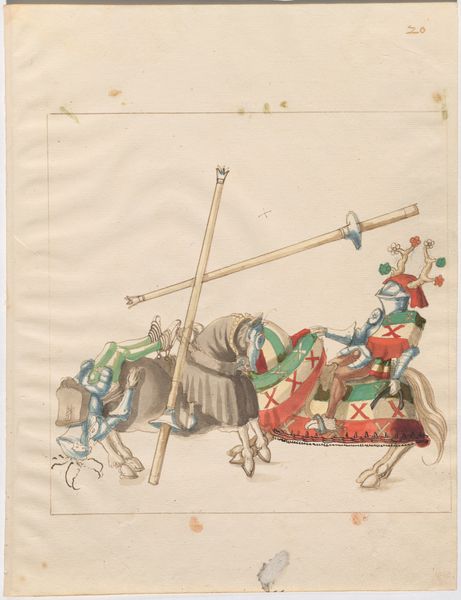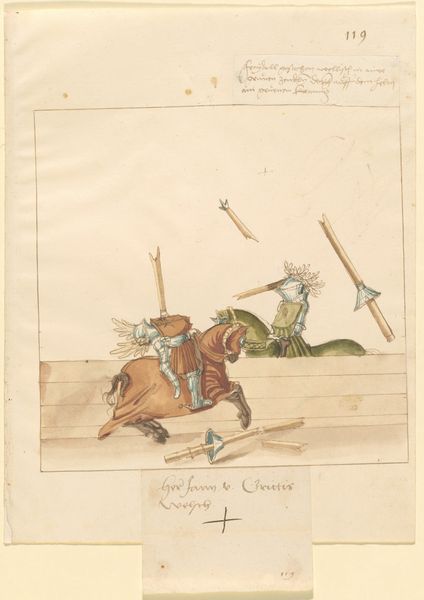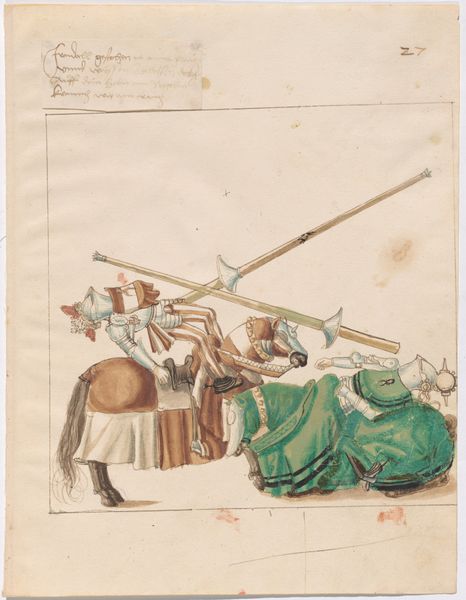
drawing, coloured-pencil, watercolor
#
drawing
#
coloured-pencil
#
figuration
#
11_renaissance
#
watercolor
#
coloured pencil
#
history-painting
#
watercolor
Dimensions: sheet: 33 × 26.1 cm (13 × 10 1/4 in.)
Copyright: National Gallery of Art: CC0 1.0
Editor: Here we have "German Joust of Peace," made around 1512 to 1515, using watercolor and coloured pencil. It's an anonymous piece that depicts what looks like a very active scene of two knights falling off their horses mid-joust! What’s your interpretation of this lively work? Curator: Ah, yes, a tumble of Renaissance anxieties, wouldn't you say? To me, it's a poignant reflection on the performative aspects of peace. Jousting, ostensibly a sport, mimics the battlefield. Look at the broken lances! The artist uses colour—or a delightful lack thereof—to mute the violence, softening the blow, you might say, with a wash of tranquility. Editor: So, you're seeing a kind of staged peace? I guess I was too focused on the action. Curator: Precisely! This isn't chaos, but controlled chaos. Ask yourself: Why render this event in delicate watercolor? Does it domesticate conflict? Even romanticize it? What are the implications for art, then, that romanticizes destruction and failure? Perhaps it’s mocking it, ever so lightly… And did you notice the placement of that bright orange splotch? It might suggest blood on first look, yet the colour reads "orange peel". What a playful commentary on mortality! Editor: Wow, I didn't consider how much the medium is adding to the meaning. It makes you wonder how “peaceful” the Joust really is? Curator: Indeed. Now, ponder this: In our own time, what seemingly innocent games do we play that mask deeper conflicts? A fun image on first viewing turns quite reflective with the smallest thought. Editor: That's definitely given me a new perspective. I came for horses and knights, but leaving with plenty of reflective, personal questions to ask myself about peace, in art, and in life. Thanks!
Comments
No comments
Be the first to comment and join the conversation on the ultimate creative platform.
